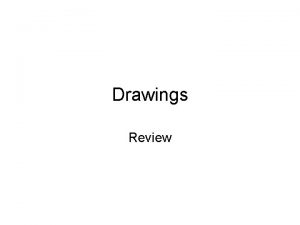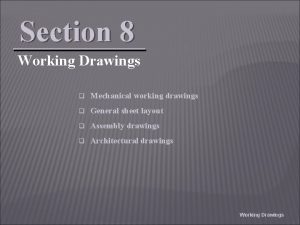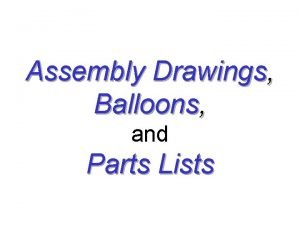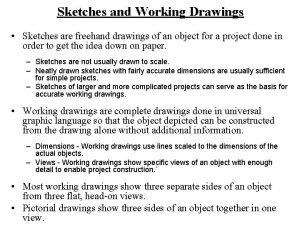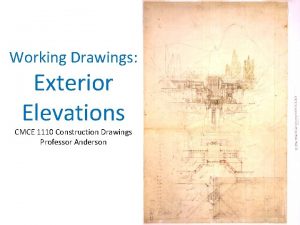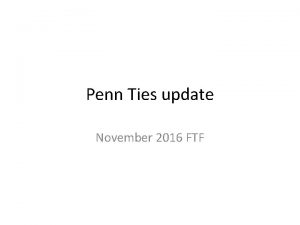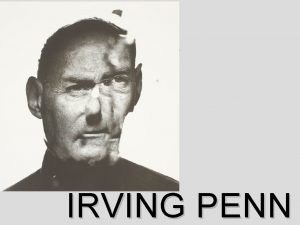Working Drawings Production Drawings Xinli Wu The Penn

















- Slides: 17

Working Drawings (Production Drawings) Xinli Wu The Penn State University

Objectives • Define working drawings • Describe how working drawings are used in industry • List the major components of a complete set of working drawings • Describe the difference between detail and assembly drawings

1. Introduction • Working drawings are specialized engineering drawings that provide information required to make the part or assembly of the final design. • Working drawings rely on orthographic projection and many other graphical techniques to communicate design information for production.

2. Definition of Working Drawings • The drawings from which a design is built; • Are legal contacts that document the design details and specifications.

Major components of a complete set of working drawings: • An assembly or subassembly drawing showing all the standard and nonstandard parts in a single drawing. • Detail drawing of each nonstandard part. • A bill of material (BOM)-- parts list. • A title block.

3. Assembly Drawing • An assembly drawing shows how each part of a design is put together. (If a design depicted is only part of a total assembly, it is referred to as a subassembly. )




-- continued • Components in an assembly drawing includes: (1) all the parts, drawn in their operating position; (2) A parts list or bill of materials (BOM); (3) leader lines with balloons, assigning each part a detail number, in sequential order; (4) machining and assembly operations and critical dimensions related to those functions.

-- continued • Assembly drawings maybe pictorial drawings or orthographic drawings • Assembly drawings maybe exploded or not. Exploded assembly drawings show the parts pulled apart but they still line up.

4. Parts List • Consists of an itemized list of all the parts to assemble one complete unit • Contain the following: (1) part number (2) part name (3) number of parts req’d (4) material (5) description

-- continued • Parts list placed above the title block should be read from the bottom to the top • Parts list placed at the top of a sheet should be read from top to bottom • Position of the parts list is your choice

5. Detail Drawings • Each nonstandard part will receive a detail drawing showing how the part looks when completed. • It completely describe the part giving everything one needs to make it, including shape, size, material, finish.


-- continued • The part number followed by the part name is given below each detail drawing. • Detail drawings are not needed for standard parts such as screws, threaded fasteners, bushing, bearings.

THANK YOU!
 Pengertian pre production
Pengertian pre production Working drawings definition
Working drawings definition Hot working and cold working difference
Hot working and cold working difference Differentiate between hot working and cold working
Differentiate between hot working and cold working Hard work vs smart work presentation
Hard work vs smart work presentation Pengerjaan panas dan dingin
Pengerjaan panas dan dingin Hot working and cold working
Hot working and cold working Music
Music Số nguyên tố là gì
Số nguyên tố là gì Tỉ lệ cơ thể trẻ em
Tỉ lệ cơ thể trẻ em Fecboak
Fecboak Các châu lục và đại dương trên thế giới
Các châu lục và đại dương trên thế giới Thế nào là hệ số cao nhất
Thế nào là hệ số cao nhất Hệ hô hấp
Hệ hô hấp ưu thế lai là gì
ưu thế lai là gì Tư thế ngồi viết
Tư thế ngồi viết đặc điểm cơ thể của người tối cổ
đặc điểm cơ thể của người tối cổ Cái miệng nó xinh thế chỉ nói điều hay thôi
Cái miệng nó xinh thế chỉ nói điều hay thôi


















